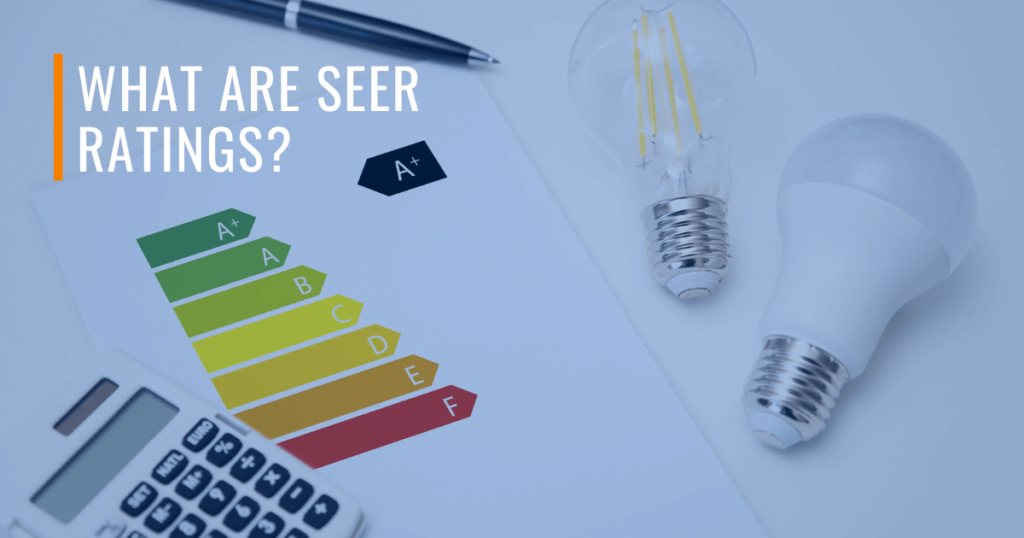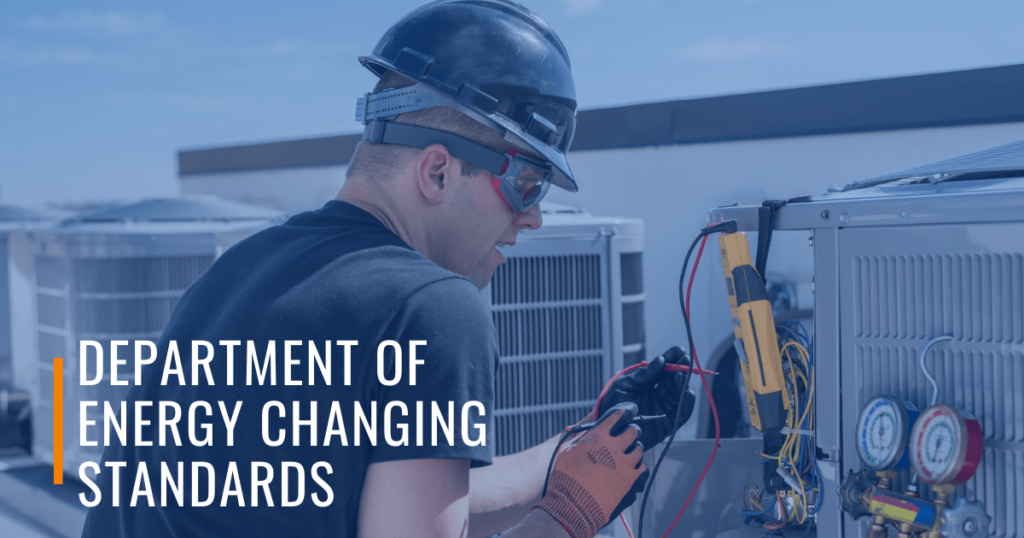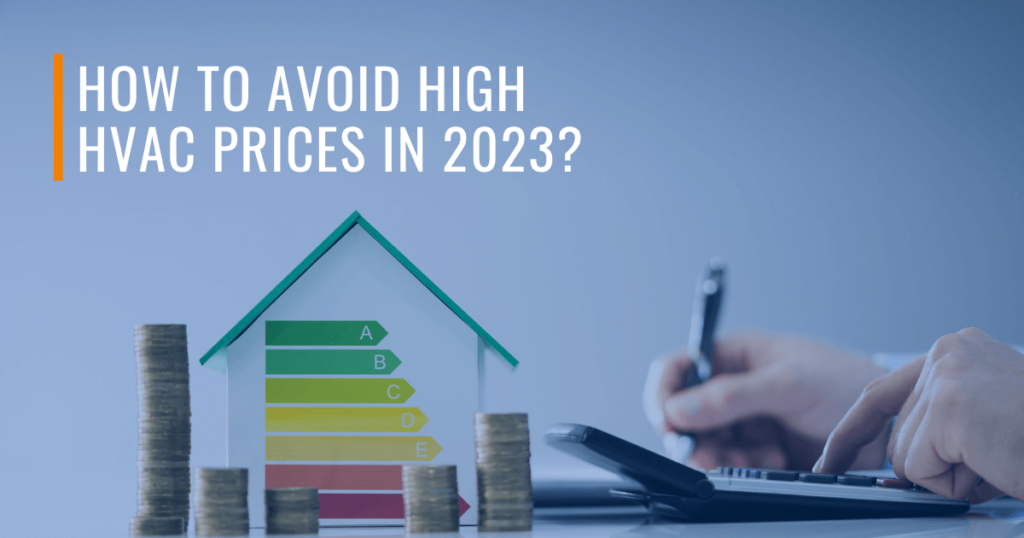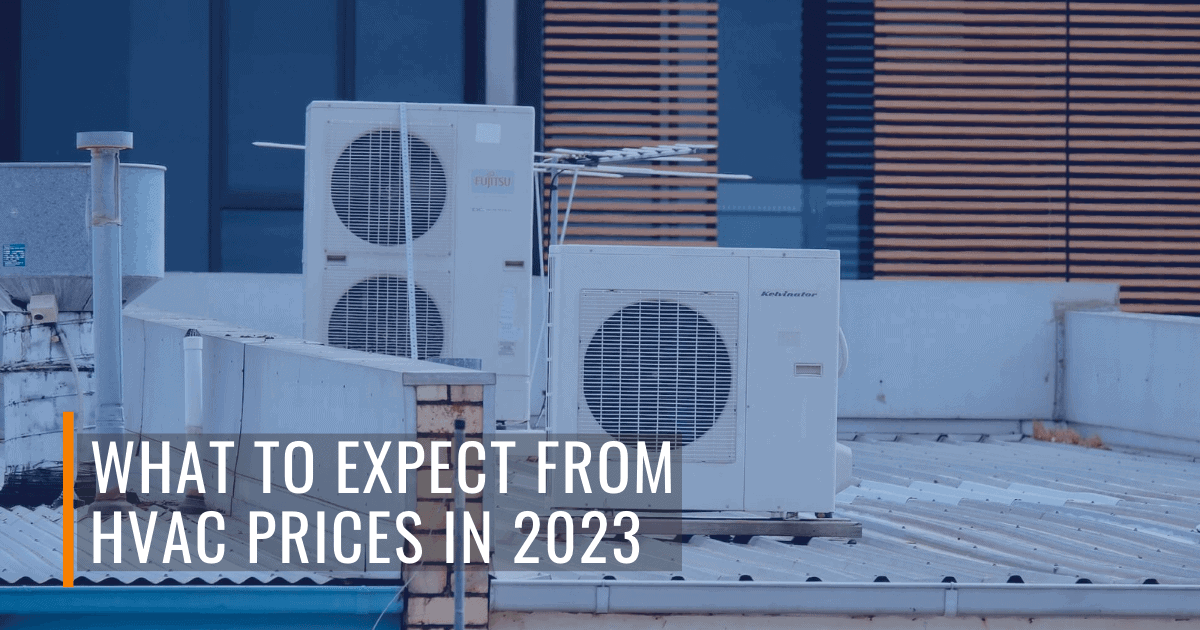Are HVAC Prices Going Down in 2023?
By Randy Breneman on Wednesday, December 28, 2022Brace Yourself for the New Minimum Efficiency Standards
What to Expect From the Year Ahead
Unfortunately, HVAC prices are not expected to be going down. 2023 will see significant changes in HVAC/air conditioning systems and prices. Knowing what to expect before midnight on January 1st, 2023, can help you avoid high costs due to price increases. Homeowners and small business owners will benefit from understanding the upcoming HVAC systems and equipment changes.
The Department of Energy has outlined numerous changes to come in the world of HVAC and air conditioning. This article will describe everything you should know about HVAC price changes in 2023 to help you navigate the inevitable shifts ahead.
What is SEER?

A common term you will come across when researching the new HVAC system price for 2023 is SEER. Therefore, it’s essential to start by asking: What is SEER? SEER describes the Seasonal Energy Efficiency Ratio and the accurate ratio of the heat removed from an air-conditioned space during the cooling season divided by the total amount of electrical energy consumed by an air conditioner during this season. Air conditioners have SEER ratings, described in more detail below, that can help you determine the total cost of your air conditioner unit.
What Are SEER Ratings?

Once you understand the SEER meaning, learning about SEER ratings is essential. What is SEER rating in an AC system? SEER ratings are the overall calculation determined when comparing an AC unit’s efficiency during specific seasons to another unit. SEER ratings are essential because they allow consumers to compare overall energy efficiency when selecting a new AC unit.
Therefore, the higher the SEER rating, the less electrical energy your AC uses to cool down your home or business. When purchasing an air conditioner, you can expect to spend more on AC units with a higher SEER rating. However, these units will save you money on electricity bills in the long run. Individuals operating in an HVAC business can benefit significantly from carefully selecting systems based on their SEER ratings.
Why is SEER Important?

SEER ratings are important because they allow you to understand how efficiently your air conditioning or heating unit operates during cooling seasons. A SEER rating shows you how to maintain efficiency standards to comply with recommended standards. Paying attention to the SEER rating on your AC unit can help you save hundreds of dollars per year.
Why Does the Department of Energy Change HVAC Standards?
Adjusting to changes in HVAC equipment is challenging for many homeowners and business owners. Many people wonder why the Department of Energy changes HVAC standards in general. Ultimately, these changes are made for good reason.
Changes to HVAC standards help positively impact the environment and reduce carbon emissions. Previous changes in energy conservation guidelines for HVAC have significantly reduced CO2 emissions, leading the Department of Energy to strive toward fewer and fewer carbon dioxide emissions with updated systems. Though this means that HVAC costs more to manufacture and purchase, these systems’ effect on the environment is integral to combating climate change.
SEER Changes to Expect in 2023

HVAC system prices in 2023 will differ from previous years, making it essential to understand the changes you will face as of January 1st, 2023. While these changes are ultimately for the better, staying informed is essential to adapt to the new landscape of the HVAC industry.
Understanding these changes will help you identify how to avoid paying your unit price increases. Below is a comprehensive outline of the SEER rating changes you should expect in 2023.
Changes to the Minimum SEER Rating
The most notable change occurring in 2023 is the minimum SEER rating requirements. Beginning January 1st, 2023, SEER ratings and standards will specifically jump one SEER for air and heat pump units.
As of January 1st, 2023, the minimum SEER grading will increase in the Southeast, Southwest, and Northern regions of the United States. For Southeast and Southwest states, the minimum SEER rating will increase from 14 SEER to 15 SEER starting on January 1st. Northern states’ minimum requirements will increase in 2023 from 13 SEER to 14 SEER for AC units.
SEER2 Labels
Because of the new SEER regulations, consumers can anticipate new labels that list seasonal efficiency on their HVAC units. New labels will list seasonal efficiency ratings as SEER2 rather than SEER. This new label indicates the changes in safety testing procedures for HVAC systems. Efficiency in 2023 will also be labeled as EER2 and HSPF2 units.
New Testing Requirements
SEER2 testing procedures will differ from the previous SEER testing protocol. The new testing requirements will help accurately depict the overall influence of ductwork and external static pressure for HVAC products on the market. The increase in overall SEER ratings better represents real-world AC applications and units. The new testing procedures in 2023 will better reflect current field conditions to identify energy-efficient practices for HVAC units.
Inventory Compliance Requirements
New inventory compliance requirements are a significant change to expect from the updated SEER2 rating system in 2023. Inventory management has become more complicated as people adjust and adapt to the new 2023 compliance standards. 2023 standards are based on a combination of the least efficient indoor and outdoor heating and cooling units. However, inventory compliance requirements will shift depending on individual regions. Below is a breakdown of new inventory management requirements depending on your region.
- For the Southwest region: Non-compliant HVAC equipment must be sold before January 1st, 2023, for installation.
- For the Southeast region: Non-compliant HVAC equipment must be sold before January 1st, 2023, for installation.
- For the North Region: Non-compliant HVAC equipment manufactured before January 1st, 2023, can still be sold and installed in the new year for northern states.
HVAC System Prices
HVAC prices are expected to rise in 2023 because of the new SEER2 standards. HVAC system prices will occur through installation and repair costs to homeowners and business owners. Increased prices for HVAC equipment will likely jump between 15% to 25% in the early months of 2023. High inflation rates, along with labor shortages, will continue to impact the price of HVAC systems.
The price of HVAC system units in 2023 results from manufacturers beginning to invest in new system designs to guarantee that they meet compliance standards. Therefore, expect increases in your unit prices at the start of the new year.
Why did the Price Change?

HVAC system prices will undoubtedly rise in 2023. Before managing the HVAC price increases 2023 will bring, it’s essential to identify why the changes are occurring in the first place. Below is a rundown of the reasons behind significant price increases for HVAC systems in 2023.
Better Performance From Cooling Equipment Components
Cooling systems will have a more successful performance rate in 2023 than previous standard equipment. The primary reason behind the price increases in cooling equipment is that new components are being used for better performance, higher efficiency, and longer-lasting durability.
New cooling systems in 2023 will also have a refrigerant with low global warming potential. While the price increase is troubling to some, these changes are ultimately for the better and will help you access a system that lasts longer, thereby reducing maintenance costs.
Size Increases for Indoor and Outdoor AC Coils
Another reason for the HVAC price increase in 2023 is size increases for indoor and outdoor AC coils. Cooling systems and coils will increase in size to promote greater efficiency. The energy-efficient features will increase the cost of materials, including copper, steel, and aluminum. Depending on your home or business size, you may need a more significant heating and cooling system. The larger the system, the pricier the cost of the initial unit.
Labor Costs for Physically Larger Units
Larger units require more robust labor to assemble the equipment and install your system. AC system prices will increase in 2023 because the larger units necessitate excessive manual labor. Additionally, the greater size and AC units and the costlier design make it challenging for traditional transportation methods such as rail cars or trailers. Therefore, not only will the material be more expensive, but the shipping and handling costs will also increase.
Different Fan Designs
Design elements will play a significant role in higher costs for HVAC units in 2023. For instance, bigger, newly designed fans that cover air conditioners will incur additional costs for manufacturers and consumers in 2023.
How to Avoid Paying High Price Increases for HVAC Systems in 2023

While there are numerous benefits to the new changes in HVAC systems in 2023, you may be worried about paying higher prices for your system. You can avoid paying high price increases for your system in 2023 by considering the benefits of replacing the system entirely.
Replace Your Existing HVAC System
One way to avoid paying the high price changes for your HVAC system in 2023 is to consider replacing your existing system before January 1st, 2023. Replacement equipment can help lower your cost in 2023, given the new SEER2 standards. There are numerous reasons why you should consider replacing your equipment before 2023.R-22 Refrigerant
Some homeowners or business owners may choose to replace their HVAC system if their air conditioner operates with R-22, an ozone-depleting refrigerant. R-22 is expensive because of its limited supply, and this refrigerant is harmful to the environment and causes a significant danger to the ozone layer. R-22 refrigerant has been phasing out between 2010 and 2030 according to guidelines from the Environmental Protection Agency.
Refilling an air conditioner refrigerant generally costs from $100 to $350. However, cooling units that use R-22 refrigerant cost as much as $600 for refills. Regardless of how well your unit works, it is wise to replace the system if you still operate with R-22 refrigerant, as this component will only be available for a bit longer.Your System is 12+ Years Old
Even cooling systems that use ozone-friendly refrigerants should be replaced before 2023 if they are over 12 years old. No matter how well your system works, its age significantly affects how much maintenance costs will be moving forward. It’s wisest to replace your system before the price increases and upgrade to a suitable, long-lasting system.Your System Requires Repair Costs
If your system uses an ozone-friendly refrigerant and is under 12 years old, you may wonder why you should still consider the price. HVAC systems may not seem old enough to require replacement; however, if your system faces repair costs over $500, it’s worthwhile to consider replacing it entirely. By replacing your system now rather than in the future if it breaks down, you will save money on a compliance system and avoid hefty maintenance costs.
Reduce Energy Usage
While it’s true that a new HVAC system may cost more upfront than simple repairs to your current system, choosing a high-efficiency system that meets new compliance standards and regulations can save you costs long-term. The primary way that upgrading your home’s HVAC system can save you money is by reducing total energy costs and lowering your electric bills.
New, high-quality heating and cooling systems can reduce energy usage by over 20%. By replacing your current system, you save significant energy, maximize efficiency, and save more money on your monthly bills.
Manage Repairs and Upgrades with Smart Service
Navigating higher HVAC prices is something that homeowners and HVAC business owners alike will have to deal with in 2023. However, services are available to make this transition simpler. For instance, expert services from Smart Service can provide you with the necessary software to manage this transition.
Smart Service provides flexible software solutions for HVAC businesses looking for help adapting to upcoming changes in the heating and cooling industries. Smart Services is essential for field service workers requiring help with HVAC practices and managing replacement and upgrades for customers hoping to save money before the new requirements in 2023.
Smart Service is an essential option for any HVAC business looking to learn and adapt to rapid changes in the heating and cooling space. To learn more about how Smart Service can help, contact the experts today and discover more about the Smart Service software solution.


